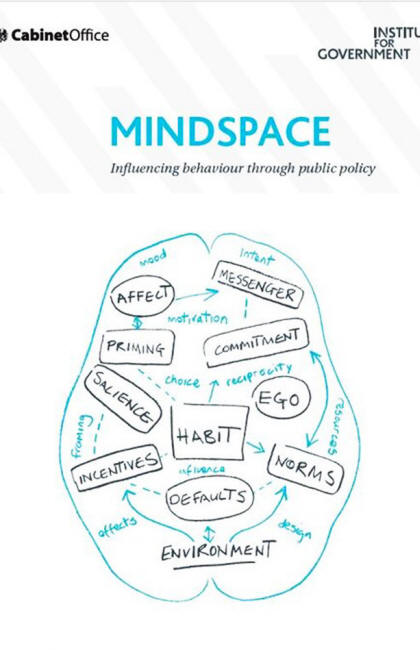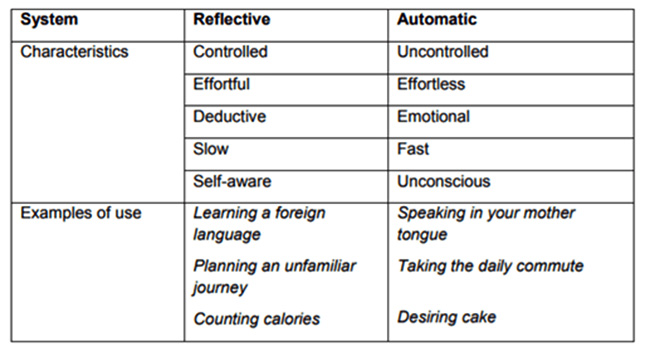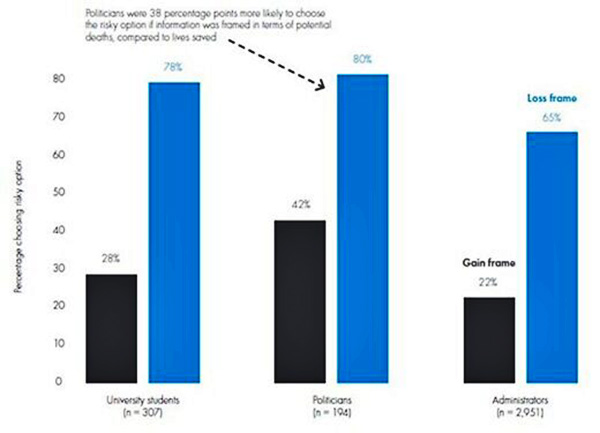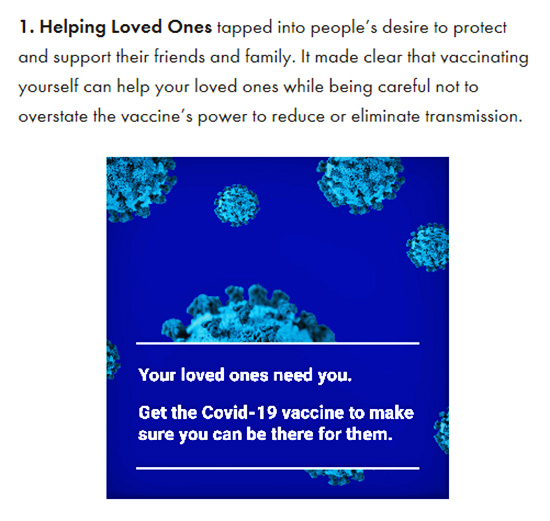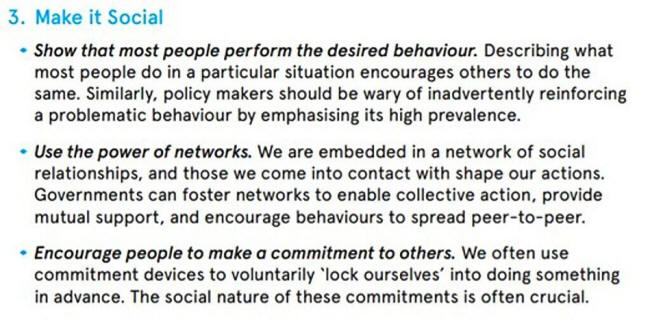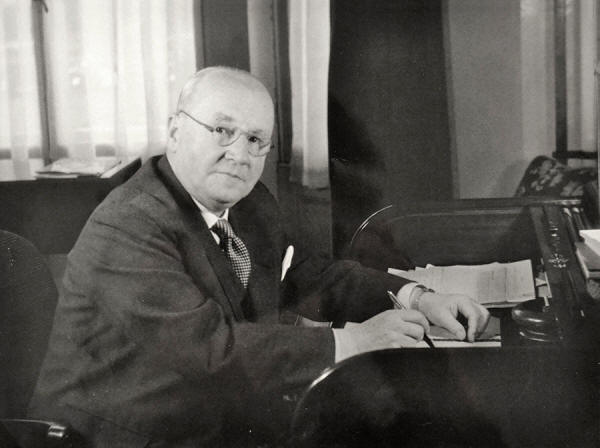|
Information sent by Bazook894
it will be rigidly confined to the governing class.
The populace will not be allowed to know how its convictions were generated.
When the technique has been perfected, every government that has been in charge of education for a generation will be able to control its subjects securely
without the need
of armies or policemen. The Impact of Science on Society (1951)
This article is for those
who have raised concerns over the totalitarian power grab by
governments, only to find a significant portion of people
"spellbound," with their stories and identities "reframed" to fit
the narrative.
It will demonstrate how common-sense thinking has come to be seen as morbidly eccentric due to the fact that a significant portion of the population has been reprogrammed using a series of trance-inducing public messaging "incantations."
Above all, this article will seek to demonstrate how the spells cast over the last two years may be finally broken and the incantations reversed.
Despite the abundance of Hollywood "spy" thrillers and cartoonish depictions of Anglo-American intelligence agencies like MI6 and the CIA protecting citizens, saving the world, or reigning in one of their own "rogue" elements, the nature and extent of genuine intel agency PSYOPS (Psychological Operations) are rarely explored.
While conspiracy theories abound, they may or may not be true.
On the other hand, PSYOPS and what former KGB agent Yuri Bezmenov called "ideological subversion" are very real, yet seldom discussed in any meaningful manner.
This is especially the case if we consider how the latest "behavioral insights" from the fields of social psychology and behavioral science have been used across the Western world over the last two years.
Under the auspices of battling a virus with a 99% survival rate, the population has been bombarded with an aggressive combination of,
As we will continue to demonstrate, all of these techniques - in one way or another - have been designed to target what social engineers call "automatic motivations" i.e. our unconscious (or preconscious) minds.
As we discussed in the previous article, many have observed how a significant portion of the population appears to be under a "spell." These spells have turned attempts at honest and rational discussion among friends, family, and co-workers into futile exercises.
None of this is by chance...
Public messaging and senior government officials have been using the latest insights into "Neuro Linguistic Programming" (NLP) - first laid out in a book called The Structure of Magic by John Grinder and Richard Bandler - along with "Nudge Theory" to actively change people's thoughts and behavior without their conscious knowledge or consent.
As we will show, this new age of trance warfare and mass hypnosis has been spearheaded across the Five Eyes, starting in 2010 with the establishment of the Behavioral Insights Team by top echelons of the UK political elite.
Enter the Magicians
Before diving into the spell books and the means of reversing spells, let us briefly recap NLP's history and the use of what its creators consider the "magical" qualities of language, as well as the origins of "Nudge Theory" (first developed by the Obama Administration's Cass Sunstein and behavioral economist Richard Thaler).
On the one hand, NLP techniques were developed as a formal system for transforming a patient's "meta-model" of the world i.e. their linguistically-formed maps of reality.
NLP practitioners have often emphasized the magical qualities of language, which in the right hands, give one the ability to transform people's linguistic maps and "reframe" their reality.
In recent times, this work has been combined with "Nudge Theory," which uses the latest cutting-edge insights in behavioral science and social psychology to directly target and subtly steer people's unconscious minds without the need of their "reflective processes" i.e. the conscious mind.
The first spell book to systematically lay out these insights and their application by governments was the UK Institute for Government's 2010 MindSpace document.
The UK Institute for Government describes itself as,
In the wake of the MindSpace document and its new approach to powerful and "cost-effective" behavior modification, the Behavioral Insights Team was established as a new psychological warfare node across the Five Eyes countries i.e.,
The idea of "nudging" was first laid out by Cass Sunstein and Richard Thaler in a 2008 book called Nudge - Improving Decisions about Health, Wealth, and Happiness.
Notably, Cass Sunstein is considered one of the most cited legal scholars of recent times.
During his stint in the Obama administration, Sunstein was at the centre of the crackdown on "conspiracy theories" and the "real risks" they posed to governments and their "antiterrorism policies."
In a 2008 paper authored by Cass Sunstein and Adrian Vermeule, the authors write:
They then went on to list several steps government agencies could take to counter the growing threat of conspiracy theories:
Thus, Sunstein and his cohorts have been responsible for the framing of conspiracy theories as existential threats to democracy and counter-terrorism, making very careful use of nudging and NLP practices to create powerful cognitive dissonances in the minds of anyone engaged in wrong think.
Today, virtually all major public policy issues have in been "reframed" to nudge people into unconsciously making decisions that radically transform not only their lives, but the very makeup of society. Sunstein now serves in the Biden administration's Department of Homeland Security.
Following Sunstein and Thaler's work on nudging, these insights were picked up and spearheaded by top echelons of the UK political establishment.
The Behavioral Insights Team (BIT), which produced the MindSpace document and its sequels, was established by the British Conservative party took power, with George Osborne at the financial helm as the new Chancellor of the Exchequer.
In its own words, the BIT describes its history in a 2018 Behavioural Government report in the following manner:
According to the BIT's own website, it is,
Not surprisingly, the UK Cabinet Office is the same institution that commissioned MindSpace several years earlier.
In its own words, the BIT describes its web of behavioral scientists in the following way:
Speaking at a 2009 Fabian Society meeting, Ed Miliband of the British Labor Part made the following remarks about "Nudging":
In an April 8, 2009 article The Guardian would reference George Osborne - the Chancellor of the Exchequer - discussing the importance of "Nudging":
Soon after the BIT was established, it went on to become the leading institution shaping public messaging across the Western world, with offices conveniently situated in all of the Five Eyes countries.
With this brief history, let us now dive into the "spell books" used by the would-be sorcerer's apprentices of the 21st century.
The Structure of Magic
Taken together, NLP and Nudging techniques may rightly be considered a new hybrid form of "trance warfare."
It may be compared with previous eras of psychological warfare, but also be seen as quite distinct in that a new degree of scientific precision has been achieved over the last decade.
At this point, we should state that none of this is new.
As Bertrand Russell himself observed - a descendent of one of the oldest imperial lines of Britain's hereditary "blue bloods" - rule-of-thumb tricks and techniques in mass psychology have existed for a while:
What we are looking at now is the culmination of a century-long process of mass psychological control.
This new precision accounts for the spell-like quality that seems to have enraptured so many people, often even highly-educated or well-meaning citizens, including doctors, teachers, law enforcement etc.
However, the structures of these "spells," rather than being magical, are due to scientific precision in behavioural science and social psychology.
Unlike more traditional and earlier forms of information and psychological warfare, which used certain rule-of-thumb practices for manipulating "groups," subliminal messaging etc. the new "context model" elaborated in the UK Cabinet Office's MindSpace takes a different approach.
Rather than simply giving people false or confusing information per se, or attempting to sway their conscious minds and faculties, it is about directly steering their unconscious minds using the "magical" language of NLP, unconscious "Nudging," and trance-inducing public messaging "incantations."
The basis for these concepts and their application can be found in the pioneering work of John Grinder and Richard Bandler, which they formulated in The Structure of Magic I & II.
Even among the chapters of The Structure of Magic I, one can find titles like "Becoming a Sorcerer's Apprentice"and "The Final Incantation."
In brief, the initial research by Grinder and Bandler can be summed up in the following manner.
The pioneers in Neuro Linguistic Programming (NLP) had observed the seemingly magical results of very effective and powerful therapists like Virginia Satir, Fritz Perls, and others.
These therapists had such a powerful ability to affect fundamental change in their patients' identities and behaviors that Bandler and Grinder sought to model how their intuitive approaches allowed them to effect such deep and "magical" transformations.
NLP became a formalized and sophisticated version of the many intuitive insights practiced by these therapeutic "sorcerer's apprentices."
40 years later, with the addition of "Nudge Theory," we have entered the age of "trance warfare." In the simplest terms, we can observe that people experience trance in various ways throughout daily life, from driving a car, walking, exercising, all of these activities involve "automatic processes," which don't have to be consciously directed.
In trance warfare, social engineers are afforded the ability to directly trigger and steer the various automatic processes found in trance states without people's conscious knowledge or consent.
These techniques involve using NLP "framing" techniques, targeting natural "defaults" in the human decision-making process, using "cues," "priming," leveraging authority and the many "shortcuts" taken by the mind when faced with various choices.
The purpose of this article is to allow people to put a name on all these trance-inducing techniques and to name the "frames" used by public messaging whereby even the laymen can become capable of breaking the spells and reversing incantations, almost as magically as they were initially cast.
Opening the Spell Books
In the right hands, language can have a magical power.
Those with an intuitively strong ability to know just what to say, at just the right time, can have immense power over others, especially when the said others aren't aware of the kinds of "spells" being cast.
Using different kinds of language, people can frame their stories, lives, and the problems they face in markedly different ways.
Carefully-curated language thus has the ability to shape our conscious and unconscious apprehensions of reality in the most profound ways.
In this light, NLP practitioners identify our primary interface with reality as our linguistic maps.
These maps become formalized (however poorly or however well) throughout our childhood and adulthood. We use these maps regardless of whether we are ever fully able to consciously describe them.
From a positive standpoint, NLP allows us to investigate how these maps are formed or ill-formed, how we describe situations, events, our feelings, and how all these things can be distorted, generalized, or deleted, depending on initial map formations.
In the simplest terms, NLP practitioners identify three primary ways that our linguistic maps become "ill-formed":
A single deletion or generalization of an experience can fundamentally alter our maps of reality for all future times; these maps will then consequently transform how we respond and act in the real world at any time.
Maybe we generalized certain experiences from earlier childhood and continue to retain a particular kind of language and bias, which we use indiscriminately, regardless of whether new experiences actually match up. In any case, these maps enforce certain biases.
Maybe we have deleted crucial information from our descriptions of past experiences, making new more nuanced and adaptive responses to future similar experiences impossible.
We may continue to distort our apprehension of reality, and consequently our feelings and thoughts, until we revisit these maps and identify the impoverished parts.
Today, redefining the population's linguistic maps through public messaging "incantations" has become the "new normal."
From "re-imagining policing" to "two weeks to flatten the curve" and "protecting loved ones" from a virus with a 99% survival rate, these incantations have been amplified by MSM outlets 24/7, and then strengthened by a series of cues, anchors and other nudges.
As mentioned, the first spell book was the UK Institute for Government's 2010 MindSpace document, which we looked at in "MindsSpace, Psyops, and Cognitive Warfare - Winning the Battle for the Mind."
Since then, there have been two sequels:
These manuals, perhaps more than anything else, make plain the "structures of magic" underlying the public messaging. Without these techniques, the radical transformations that have taken place across the Western world would have in all likelihood never been possible.
Now, with behavioral scientists and social engineers discussing going "beyond nudging" to shape responses to a financial crisis, the environment, healthcare, education, lawmaking, it is high-time citizens understand precisely how these "Nudgers" and NLP wizards are not only crafting current spells, but future ones.
As we outlined in the previous article, the 2010 MindSpace document presented a chart detailing the various characteristics of the two fundamentally different parts of the human mind:
As the document explained, framing policy issues and reality from the standpoint of "automatic motivations," rather than the "traditional" approach of providing people with information and allowing them to make conscious decisions, represented a new cutting-edge ability to fundamentally modify human behavior:
Understanding the fundamental distinction between the traditional means of public messaging vs. the "context model" becomes crucial to understanding how these new forms of propaganda, "trance warfare," and mass hypnosis may be effectively neutralized.
MindSpace even specifically highlights what it considers the failure of previous attempts by governments to make policy under the assumption that people could be trusted to make the right "rational" decisions:
MindSpace authors then presented nine powerful influences on our automatic processes i.e. unconscious minds, in the form of a mnemonic - MINDSPACE:
MindSpace's purpose was to teach senior policy-makers how to craft messages that could harness the full power of "nudging" people's "automatic motivations," so as to direct the population into a desired policy direction without requiring conscious knowledge and consent.
From "two weeks to flatten the curve" to "the benefits outweigh the risks," public messaging across the board has been embedded with "nudges" that move the unconscious mind in a desired direction.
For example, most mainstream outlets have been framing headlines using phrases like "according to research" and "scientists say."
However, despite wearing a scientific veil these are not scientific statements, they are appeals to group think; the statements are designed to leverage our perception of authority and cause our mind to take a mental "shortcut."
Research on this work was done by Michael Cialdini, the author of Influence.
Cialdini explained how the perception of authority could be a powerful behavioral influence because authority is often perceived as a mental shortcut for people.
For example, we go to the doctor and follow the doctor's advice because they have studied medicine and received many years of formal instruction.
So, according to Cialdini's research, having physio therapists plaster all their degrees, awards and diplomas on their office walls increased patient compliance with recommended exercise regiments by 30%.
Thus, leveraging the appearance of authority in the eyes of the population becomes a key factor in "nudging" them into taking a mental "shortcut" when faced with complex and multi-faceted problems.
We can see this with the sudden increase in use of simplistic phrases like "according to experts," "scientists say," "research says" to increase the perceived authority of a source or "messenger" - without in any way speaking to the truth or validity of findings.
A doctor's or scientist's recommendations is a "shortcut."
However, anyone who has ever listened to several different doctors diagnosing a health issue or recommending various treatments will likely find that the individual opinions of doctors can vary widely, especially when it comes to new and experimental treatments.
However, the unconscious mind takes many "shortcuts" and has many "defaults." The second influence in the MindSpace checklist is "incentives."
The checklist describes incentives in the following manner:
On page 20 of MindSpace, the authors describe this powerful behavioral influence - "losses loom larger than gains" - in the following manner:
Fast-forward to the Behavioral Insights Team's 2018 Behavioral Government report.
It describes the use of NLP "framing" techniques regarding the framing of policy decisions in terms of deaths, rather than lives saved, and the profound impact it can have on decision-makers:
Alas, despite the virus having a 99% survival rate, the primary frame of reference given to both elected officials and citizens is that they could lose someone they care about and they could give the virus to their own "loved ones," resulting in death.
The computer "modeling" of predicted deaths put out by the London Imperial College created a doomsday scenario centered on the number of deaths, not unlike the climate doomsday modeling put out by another UK university.
As reported by the UK Column's Brian Gerrish, two teams were identified as leading the Covid-19 response in Britain:
In the previous article, we looked at "Four Messages that Can Increase the Uptake of Covid-19 Vaccines."
These messages were designed to harness the powerful influence of natural "defaults" in the human decision-making process.
Not surprisingly, the most effective message for increasing vaccination uptake was "protecting loved ones":
Having studied MindSpace findings on "automatic motivations," the top-ranked message comes as no surprise:
From the standpoint of "defaults" (losses looms larger than gains), most empathetic human beings will not want to risk losing loved ones - a major loss - for the sake of (say) attending some social function - a minor gain.
Moreover, they will be willing to make great sacrifices in order to avoid even larger losses, whether potentially real or perceived.
Another particularly nefarious and vicious example of these coercive "framing" techniques would be the example of a speech given by current Canadian Prime Minister Justin Trudeau during a recent campaign stop for the 2021 Canadian Federal Elections.
Referring to the "anti-vaxxers" outside the campaign event, Trudeau made the following remarks:
Emphasizing the nature of the commitments made by the population, Trudeau added,
These seemingly simple statements frame reality in very specific terms.
They target the natural "automatic motivations" found in all healthy human beings in a very precise manner, namely, the desire to protect one's offspring.
The narrative suggests there exists two fundamentally opposed groups - arbitrarily defined as the vaccinated and unvaccinated - and suggests one group is actually threatening the other group's children.
This is perhaps one of the most aggressive, inflammatory, and divisive remarks any government official could make because it directly targets one of the most primal instincts in human beings:
However, all the scientific evidence absolutely demonstrates how little at risk children are, the chance of death from Covid-19 among those below 18 being far below 1%.
Despite these facts, the narrative frames the threat of danger against the in-group's children as an existential threat from the out-group i.e. "the unvaxxed."
Moreover, in respect to "two weeks to flatten the curve," we can observe the use of NLP "timelines."
NLP practitioners might give the example of time serving as a powerful frame of reference for shaping someone's motivation and mental state. If someone is told they have one hour to write an essay vs. two weeks to write the same essay, the emotional response and mental state will be markedly different.
In this respect, virtually no one would have accepted two months or two years to flatten the curve, but "two weeks" was an initial commitment that most reasonable good-intentioned people were willing to commit to.
In NLP terms, the emotional response to lockdowns and the "timelines" for flattening the curve were then simply "calibrated," with new "timelines" used to reframe future scenarios and responses.
While some of these techniques may be considered intuitive, and definitely not new, consider the use of "timelines" for shaping behavior more generally.
While warnings of climate doomsday scenarios with biblical floods and fires have been around for a while, the MSM and related climate "experts" have recently given humanity "12 years."
12 years suddenly became the number defining timelines for creating global legally-binding climate responses dictated by supranational institutions.
We are given a 12 year timeline before it's too late to prevent the biblical floods, fires, and tornados.
But,
So, today the many public messaging incantations by governments across the Five Eyes make use of NLP frames and NLP devices like cues, anchors, unconscious priming, and the targeting of natural "defaults" in our decision-making process.
With these various techniques, MindSpace authors created a framework by which policy-makers could begin to use the "context model" in order to effectively harness the power to influence and guide people's unconscious minds into making decisions which they otherwise would not make, were they approached with the "traditional" model of behavior change.
Unfortunately, since the initial release of MindSpace, two other spell books were released:
Both build on the initial insights of MindSpace.
Today, the leaders of these new behavior modification programs speak of going even "beyond nudging" in such a way that the behaviors and makeup of society can be transformed on previously unimagined scales across all spheres of life, including,
UN agencies and other supranational bodies have now all become busy introducing these insights to fundamentally alter the shape of humanity.
This takes us to our next example, found in the EAST manual.
EAST
It continued to build on the initial insights laid out in MindSpace, elaborating additional insights like the idea of "make it social," which we can now see put into practice everywhere.
As the EAST introduction explains:
EAST lays out four basic strategies for increasing the population's compliance with government policy:
The description of "Make it social" found in the Executive Summary on page 5 serves as a useful example of the overall approach and its power.
Consider the sudden rise of "Zoom calls" ritualizing the collective sacrifice of the population by "making it social."
The sudden rise of feel-good moments premised on compliance with government-mandated policies were turned into ritual social events, framing the government's enactment of emergency measures as a means for people to embrace collective sacrifice for the sake of "protecting loved ones" and humanity as a whole.
Zoom calls among atomized individuals became a way of honoring their "commitments" to flattening the curve.
A significant portion of all Covid-19 messaging was framed as a question of personal and collective sacrifice for the greater good - ritualizing it - essentially exploiting people's innate goodwill and good nature.
At this point, we should point out that these efforts are not new.
In his 1931 The Scientific Outlook, Lord Bertrand Russell, a descendent of one of the oldest imperial lines of Britain, outlined this outlook:
Whether personal sacrifice, a commitment to "protecting loved ones," or the suggestion that "most healthcare workers" are getting vaccinated, almost,
Trance Warfare
Putting a name on these techniques is key to forcing the unconscious processes into the reflective parts of the mind.
In respect to trance and hypnosis, we should point out that the pioneer of hypnosis, Milton Erickson, based his approach to hypnosis on language that was "artfully vague," but intentionally and systematically so.
Today, we are bombarded with public health messages, supposedly crafted by the leading health experts and senior public policy-makers, which despite all their credentials and expertise consistently and precisely uphold an "artfully vague" narrative.
The narrative encourages people to take vaccines meant to "stop the spread,"
Definitions like,
...appear to be subject to consistent revision.
The instinctive response by many rational people is to suggest systemic incompetence.
There may be a lot of that, but there are also many nudges and trance-inducing techniques meant to harness the power of automatic motivations, which by their nature involve natural trance states...
Moreover, as the co-creator of Neuro Linguistic Programming and world-leading hypnotist - Richard Bandler - states in his Guide to Trance-formation:
He studied Milton Erickson's hypnotic patterns which were described as intentionally "artfully vague," but systematically so. This allowed the patient to supply their own meaning, and enforced the appearance of sovereignty in decision-making.
The more stacked with ambiguities a statement is, especially when in a trance state, the more patients, clients, or targets become open to new suggestions and develop an ability to supply their own meaning, solidifying beliefs into the "deep structures" of their psyche and making their choices look free.
Additionally, while the decision to wear masks may simply be the result of incompetence, from the standpoint of Nudging and Neuro Linguistic Programming, masks, arrows on the floor telling people where to walk, and signs consistently reminding people to hyper-vigilantly monitor their behavior all function as effective "cues" and "priming" in the nudging process.
We can thank the Behavioral Insights Team and the "army of behavioral psychologists."
© Tavistock Institute founder member of the Tavistock Istitute
These recent developments echo what one of the fathers of all psychological warfare and brainwashing, the Tavistock Institute's Brigadier John Rawlings Rees, described as the need for an army of "psychological shock-troops" that could be strategically positioned throughout society to guide the population into accepting the policy designs of a ruling class,
In this light, since Covid-19 messaging is being crafted according to these specific concepts and terms, we believe people should be versed in the language used by the spell casters.
Knowing this language also seems to be the easiest way to reverse the incantations.
For, once a name is put on any of these nudges and "structures of magic," they become conscious objects of attention, meaning they can no longer function at their automatic "click whirr" speed.
By knowing what the frames are, such as time, or what defaults have been targeted, such as our desire to avoid losses rather than make gains, it becomes easy to see how people are placed into trance-like compliance with arbitrary instructions.
Alas, two weeks become two years (or perhaps longer).
As long as the initial unconscious nudges and automatic processes are not revisited in a conscious way, many may continue to operate on their initial commitments for indeterminate periods of time.
In fact, on page 14 MindSpace authors specifically observed how once automatic motivations are activated, these unconscious processes can continue operating until completion without conscious monitoring.
Furthermore, using other NLP techniques like "anchoring," "cues" and "priming," not only can the process can go on without an individual being aware that their unconscious processes are being targeted, they can be steered in real time.
Just as curing a disease of the soul requires a different approach than one of curing a disease of the heart, so too does breaking trances, NLP spells, and mass-hypnosis require a more nuanced and two-fold approach:
In a word:
Assuming one can sway the emotive and "automatic" part of the mind using rational language and argumentation belies the fact that Covid-19 public messaging has been geared towards the unconscious "automatic" and emotive parts of the mind.
Both of these parts must be addressed if rational discourse is to occur among the hypnotized.
As in hypnosis where certain individuals are more susceptible to trance-inducing techniques than others, likewise, certain sectors of the population have been more susceptible to the trance-inducing public messaging incantations, often preying on those who consider themselves good empathetic citizens.
Knowing the "structure" of these incantations lies at the heart of knowing how they can be reversed.
Breaking the Spell
When considering the current and future use of these kinds of techniques for "behavior change," especially in regards to the "climate crisis," let us remember the words of the early social engineering enthusiast and descendent of one of England's oldest imperial lines, Lord Bertrand Russell.
Over a half a century ago, Russell remarked:
While Freudian psychology and its application by people like Edward Bernays signaled a significant leap in the establishment's ability to influence "Popular Opinion" and the unconscious minds of the population, the development and applications of social psychology and behavioral science over the recent decade or so represents a fundamentally new age of precision in psychological warfare and behavior modification techniques:
Neuro Linguistic Programming and Nudging have thus been adopted as the key instruments to convince people that "snow is black."
Finally, concluding his optimistic musings on the future of social engineering techniques, Russell wrote:
So, we have come full circle. However, despite the seemingly sophisticated nature of this new age of trance warfare, these propaganda methods rely on a very formulaic approach that becomes hard to un-see.
From the importance of time to "losses loom larger than gains" to "social proof" i.e. 97% of scientists agree, our world is constantly being "re-framed."
Rather than simply exposing the falsehood of one given body of information, we should identify the frames and consciously decide whether we are happy with or agree with the given choice of frame.
We should ask others if they agree with the frames, or ask them how they feel about subtly different alternative frames which may have vastly different implications. We should experiment ourselves to see how easy "re-framing" the world actually is.
Any average creative writing college-level student could easily become a top-tier social engineer with a basic "how-to" reframing guide.
When new information appears, before attempting to even assess it, we should ask ourselves what the frames are. For, the "magic" lies in how the incantations are framed, rather than in the information itself. Once named, the magic fades.
In conclusion, contrary to the typical "conspiracy theory" where everyone is "in on it," PSYOPS should be understood as the opposite of a Hollywood conspiracy thriller:
People genuinely believe they are making their own decisions, unaware of the mechanisms and environmental "context models" influencing how they unconsciously respond to frames.
Citizens should have the right to decide if they want to be nudged in a predetermined direction, or further evaluate the frames and decide for themselves whether there may be a more nuanced reality and reasonable approach.
Otherwise, imagine what future "timelines" might we be in the event of a new crisis, perhaps, a sudden systemic crisis in the financial system caused by a sudden "cyber attack"?
While the author whole-heartedly believes rational arguments, science, and the light of reason should and can prevail, part of that task necessarily implies identifying where and what the nature of the emotional and psychological blocks are which prevent people from internalizing rational arguments.
As we said, what we are witnessing with the application of these new 21st century cutting edge insights from behavioral science and social psychology is trance warfare based on targeting "automatic motivations."
To win the war, we must break the spell.
Footnotes
|



